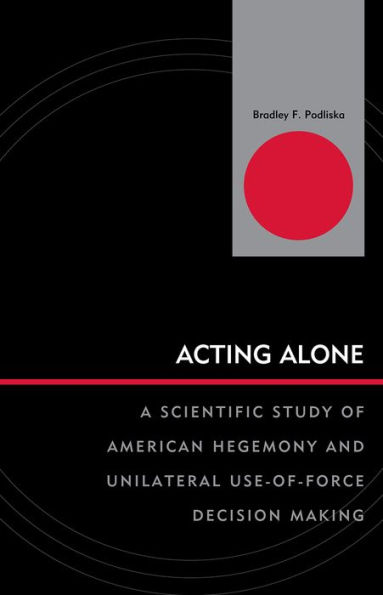Table of Contents
List of Figures xi
List of Tables xiii
Acknowledgments xv
1 Introduction 1
The Puzzle and Research Question 1
Contributions of This Study 6
Methodological Strategy: Statistical, Experimental, and Case Studies 7
Plan of the Book 9
2 Unilateral Use-of-Force Decision Making 19
Introduction 19
American Hegemonic Behavior 20
American Military Power 23
Employing American Military Power: A Two-Step Decision Process 29
The First Decision: Why a President Makes a Use-of-Force Decision 31
The Second Decision: Why a President Makes a Unilateral Use-of-Force Decision 33
A New Model of Unilateral Use-of-Force Decision Making 46
Conclusion 51
3 Statistical Tests: U.S. Unilateral Uses of Force since 1937 69
Introduction 69
Hypotheses 70
The Data Sets 75
The Crisis Dyad 76
Dependent Variable 78
Explanatory Variables 80
Control Variables 86
Statistical Tests 90
The Probit Framework 91
The Heckman Probit Model 99
Conclusion 110
4 Does the Type of Crisis Matter? An Experimental Test 127
Introduction 127
The Study 128
Experimental Method 130
Humanitarian Crisis Results 131
Regime Change Results 132
National Security Results 133
Discussion 134
Conclusion 136
5 Opening Up the "Black Box" of a President's Unilateral Decision: Case Studies of the 1991 Gulf War, 1961 Bay of Pigs Invasion, and 1989 Panama Invasion 141
Introduction 141
1991 Gulf War (Multilateral Case) 142
Bay of Pigs (Unilateral Case) 156
1989 Panama Invasion (Unilateral Case) 167
Conclusion 174
6 Conclusion 185
Introduction 185
Implications from the Statistical Analysis 185
Implications from the Experimental Analysis 188
Implications from the Case Studies Analysis 189
Directions for Future Research 190
Conclusion 192
Appendix A Coding of Crisis Dyads 195
Appendix B Experiment Instructions and Crisis Scenarios 219
Bibliography 227
Index 247
About the Author 255



